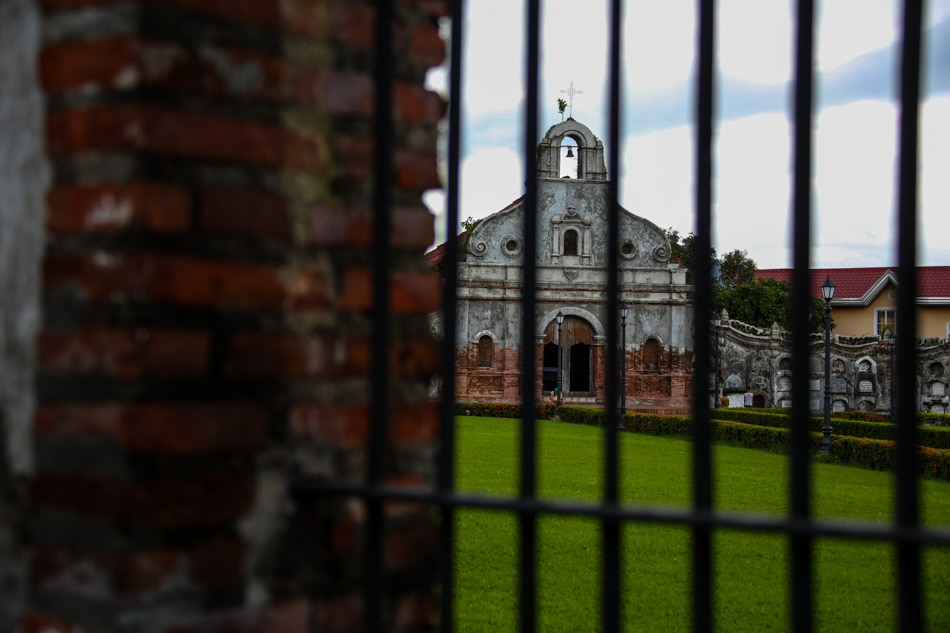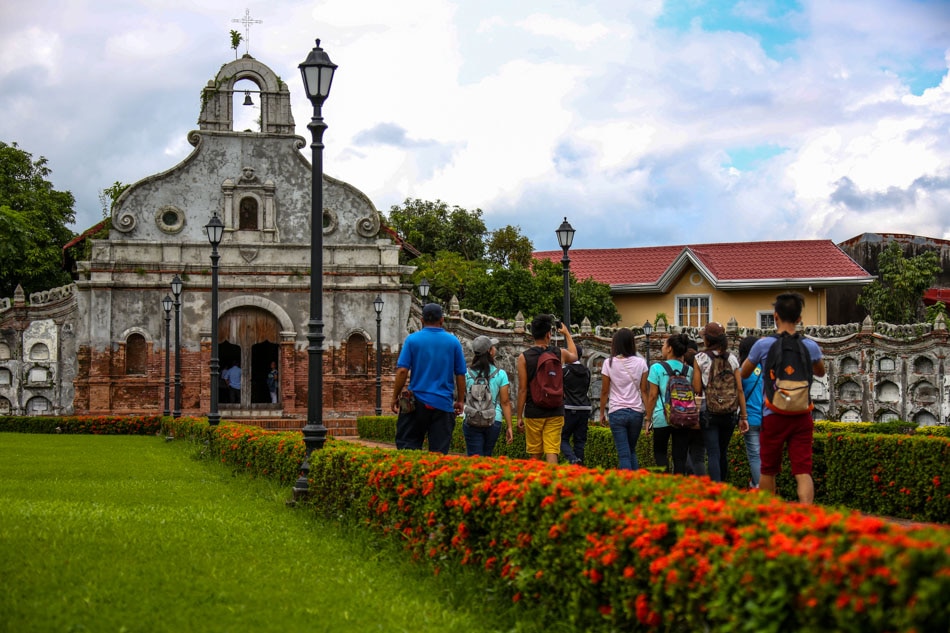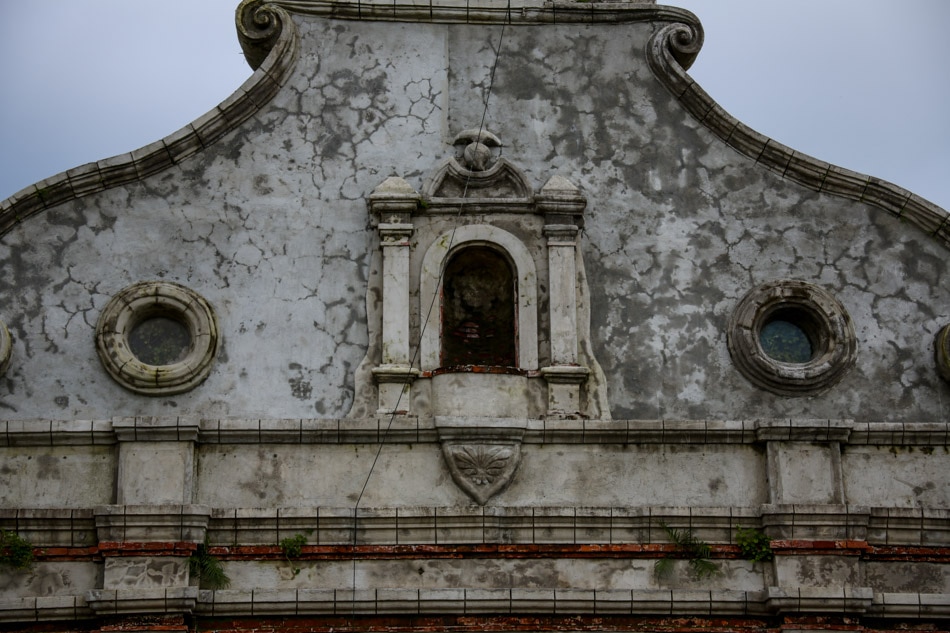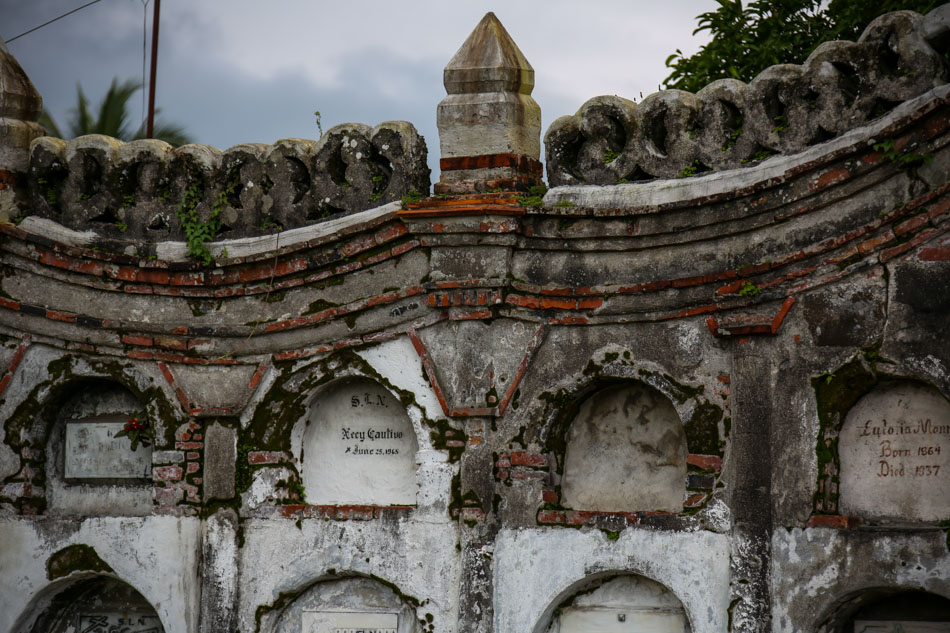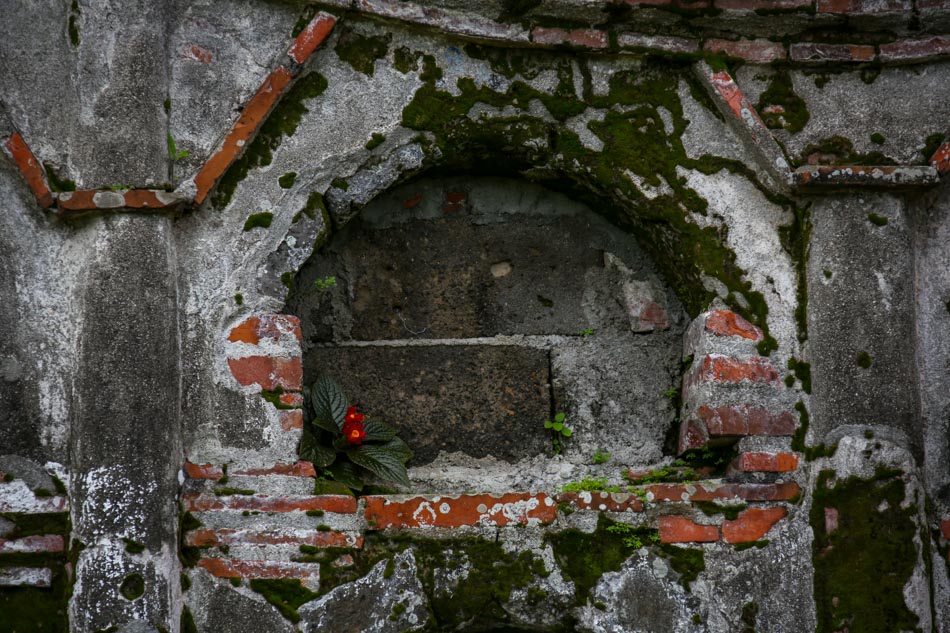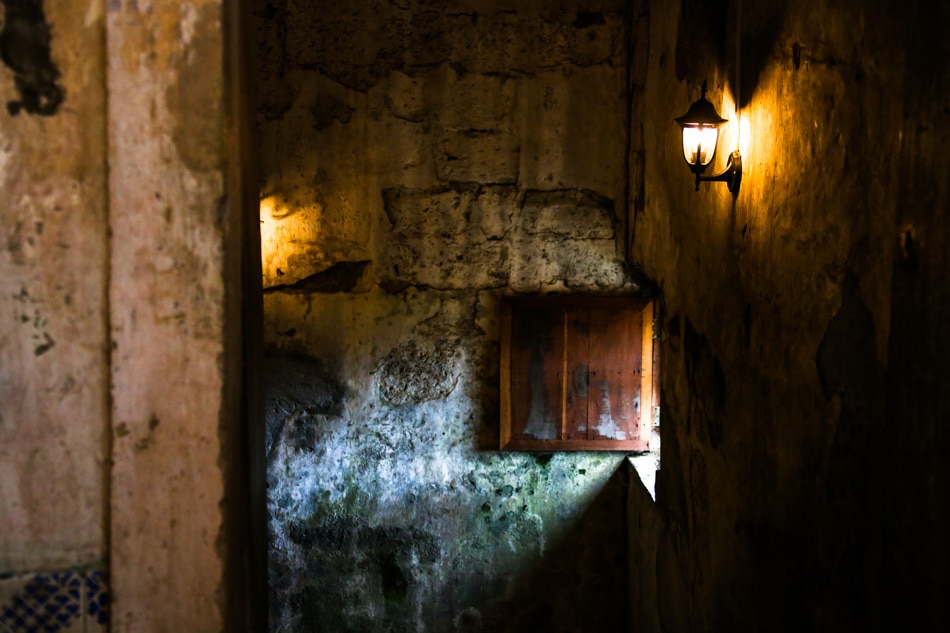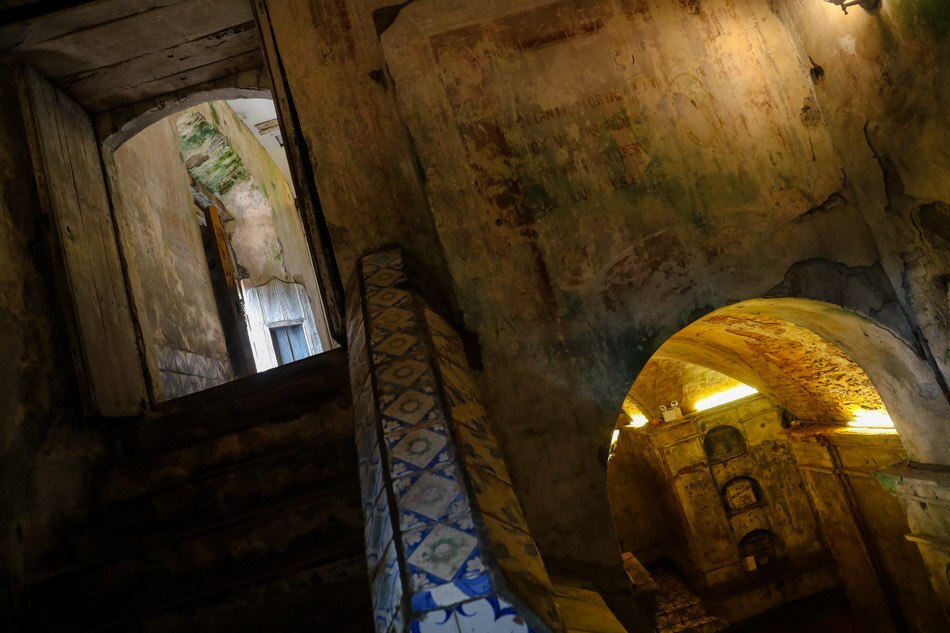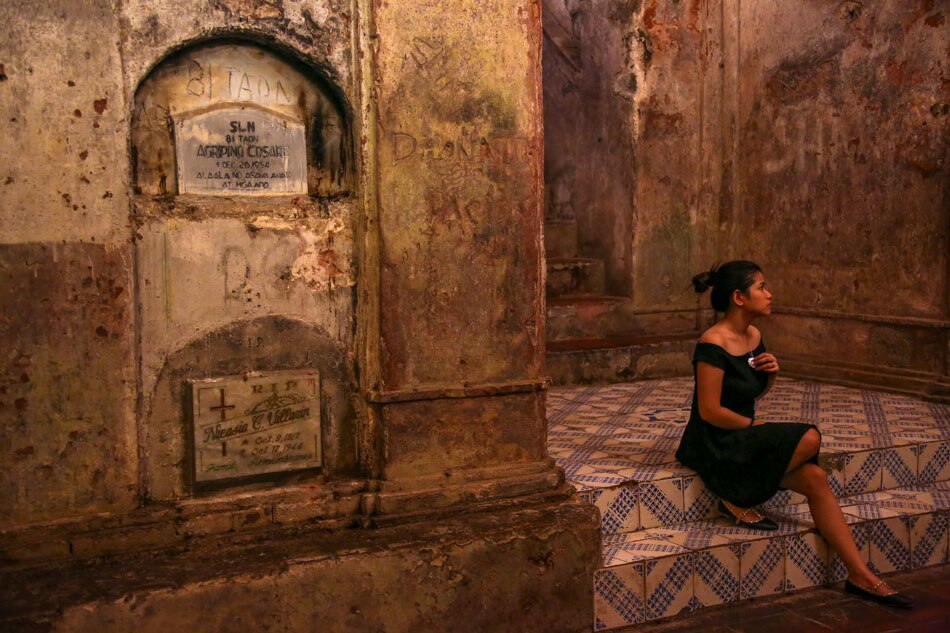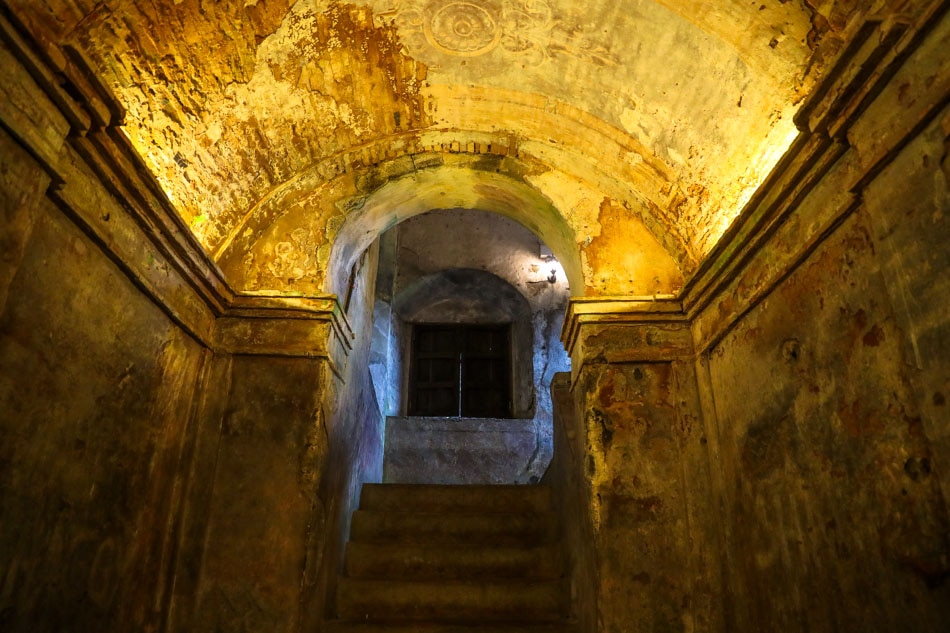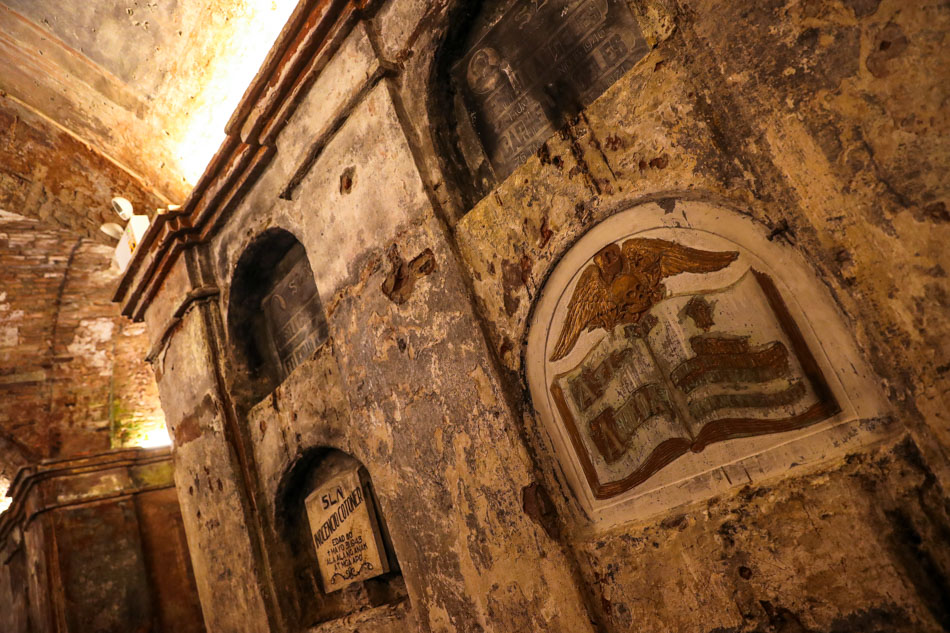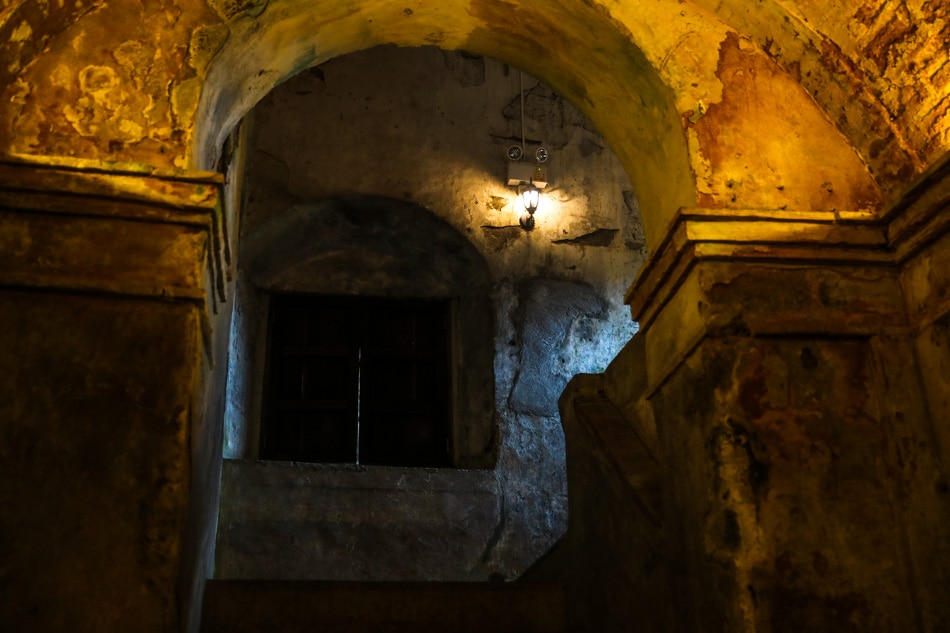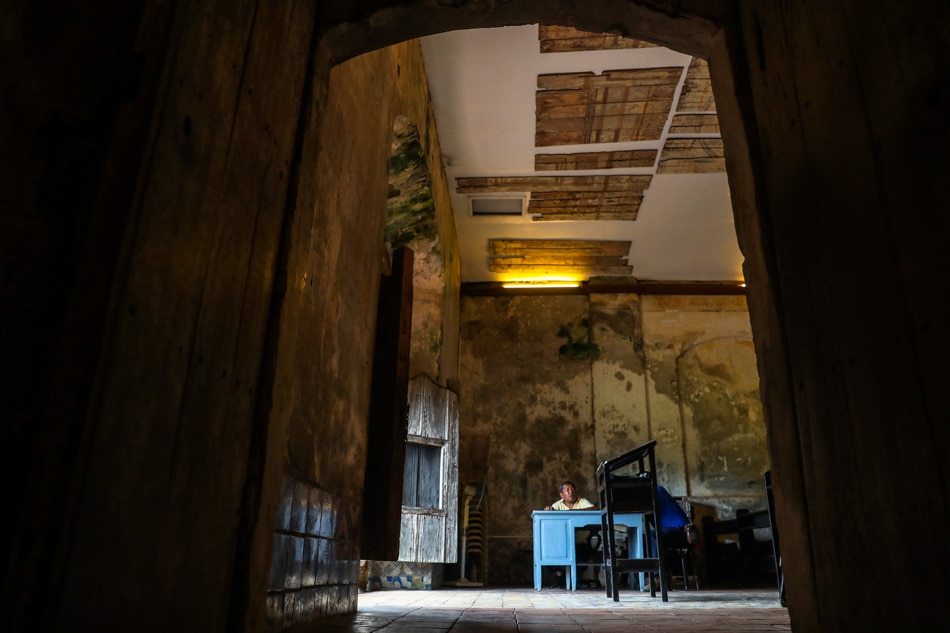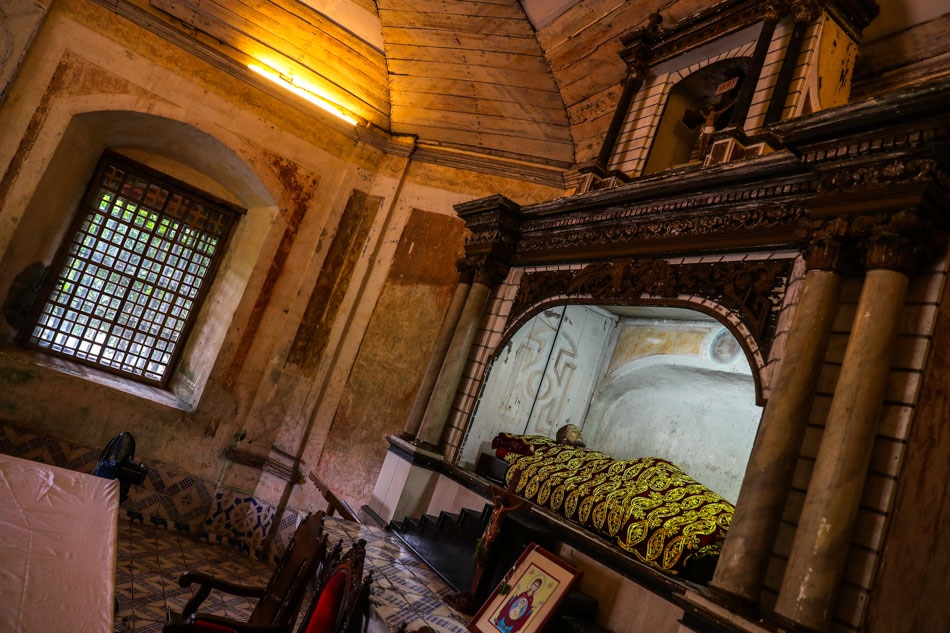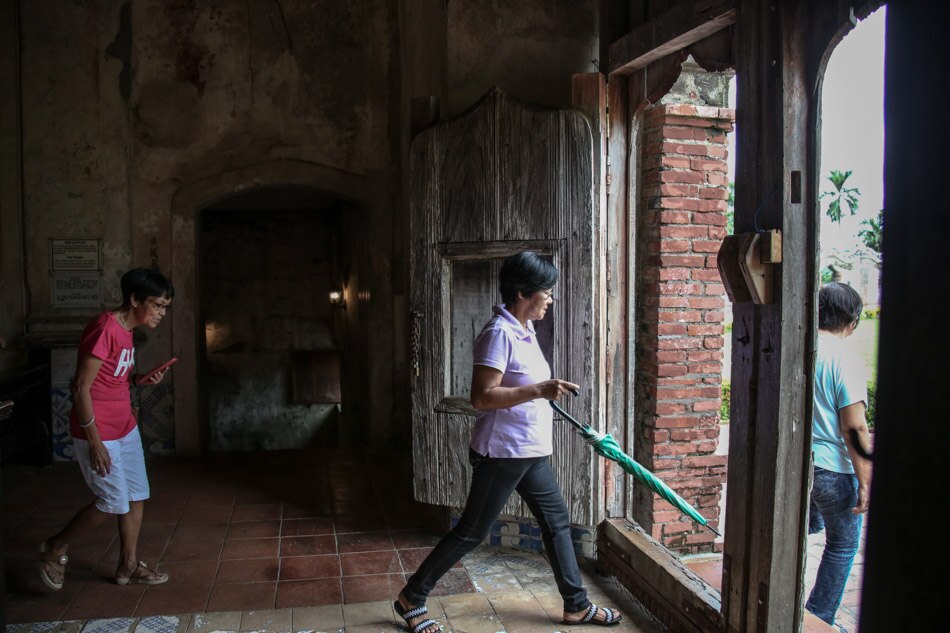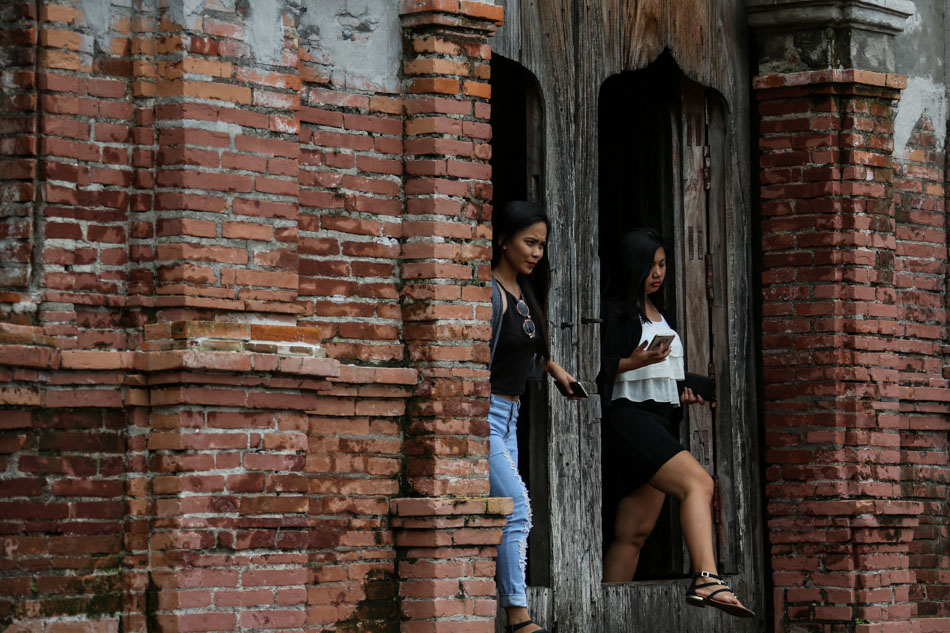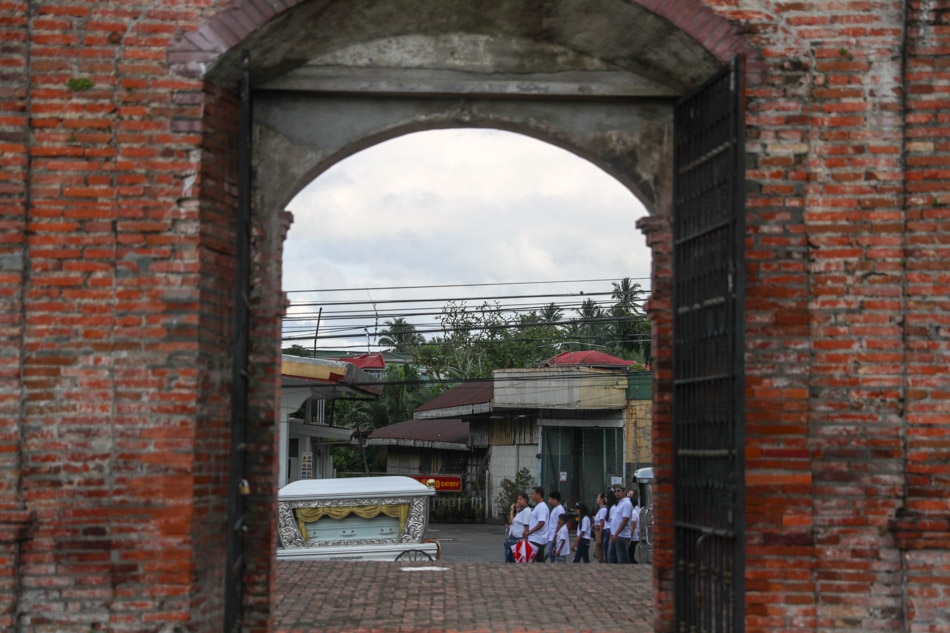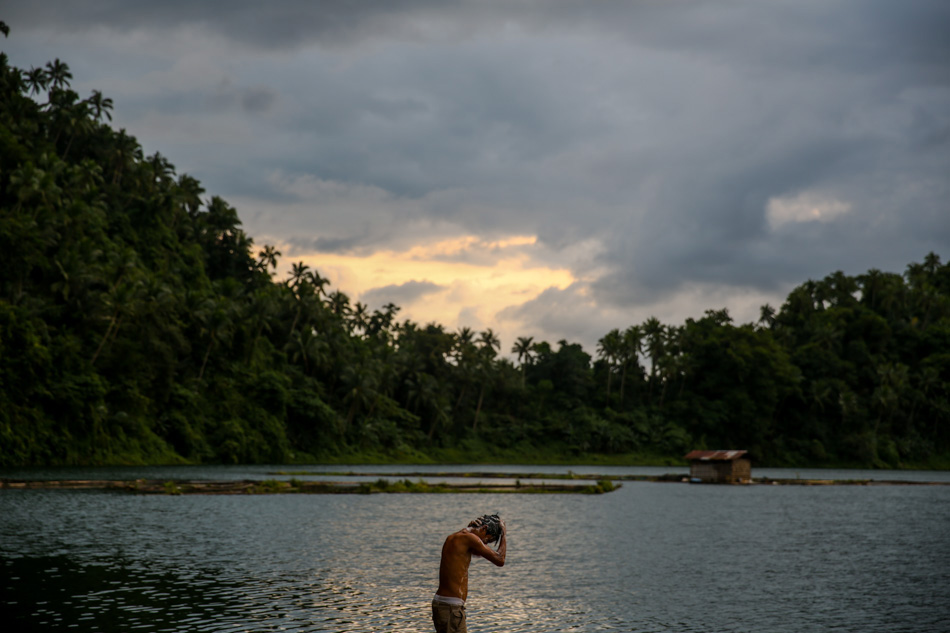A hidden Laguna gem: Exploring history, nature in Nagcarlan | ABS-CBN

Welcome, Kapamilya! We use cookies to improve your browsing experience. Continuing to use this site means you agree to our use of cookies. Tell me more!
A hidden Laguna gem: Exploring history, nature in Nagcarlan
A hidden Laguna gem: Exploring history, nature in Nagcarlan
Ivy Jean Vibar,
ABS-CBN News
Published Dec 17, 2016 12:28 PM PHT
MANILA – The superstitious fear going to the Nagcarlan Underground Cemetery due to the supposed presence of spirits which can follow unwitting visitors home. However, to conservationists, it remains a rare place which must be treasured for its uniqueness and role in history.
MANILA – The superstitious fear going to the Nagcarlan Underground Cemetery due to the supposed presence of spirits which can follow unwitting visitors home. However, to conservationists, it remains a rare place which must be treasured for its uniqueness and role in history.
A tiled stairway with an intricately decorated banister leads visitors from the charming, well-preserved church into an underground chamber hearkening to European catacombs.
A tiled stairway with an intricately decorated banister leads visitors from the charming, well-preserved church into an underground chamber hearkening to European catacombs.
Some of the niches in the walls still held the remains of people important to the town of Nagcarlan, but others were empty—the remains moved to other cemeteries by family.
Some of the niches in the walls still held the remains of people important to the town of Nagcarlan, but others were empty—the remains moved to other cemeteries by family.
Visitors marked the church and underground chamber with their names, much to the chagrin of its keepers. On one wall, “Shaggy” proudly etched his name into the whitewashed wall. In the church, no longer actively used for masses, more names are tattooed into the walls.
Visitors marked the church and underground chamber with their names, much to the chagrin of its keepers. On one wall, “Shaggy” proudly etched his name into the whitewashed wall. In the church, no longer actively used for masses, more names are tattooed into the walls.
ADVERTISEMENT
However, the graffiti, made to fade to a more discreet shade by caretakers and time, only served to underscore the site’s relevance to the town—why indeed would people choose to leave their mark in a place less relevant, or less beautiful?
However, the graffiti, made to fade to a more discreet shade by caretakers and time, only served to underscore the site’s relevance to the town—why indeed would people choose to leave their mark in a place less relevant, or less beautiful?
A museum, constructed in one month by the National Historical Commission of the Philippines (NHCP), now stands just outside the walls of the cemetery. Equipped with multimedia presentations and exhibits, it aims to give visitors a peek into the restoration process the site underwent, and introduce them to the history of a cemetery that NHCP Acting Chairman and Commissioner Rene Escalante said is one of a kind in the Philippines.
A museum, constructed in one month by the National Historical Commission of the Philippines (NHCP), now stands just outside the walls of the cemetery. Equipped with multimedia presentations and exhibits, it aims to give visitors a peek into the restoration process the site underwent, and introduce them to the history of a cemetery that NHCP Acting Chairman and Commissioner Rene Escalante said is one of a kind in the Philippines.
The church was built in 1845 by Franciscan Father Vicente Velloc for funeral masses. Located in a separate area from the St. Bartholomew the Apostle Church in Nagcarlan, the crypt was used as a meeting place by Katipuneros during the Spanish colonial period, and Filipinos during the Filipino-American war. It then housed Filipino fighters during World War II.
The church was built in 1845 by Franciscan Father Vicente Velloc for funeral masses. Located in a separate area from the St. Bartholomew the Apostle Church in Nagcarlan, the crypt was used as a meeting place by Katipuneros during the Spanish colonial period, and Filipinos during the Filipino-American war. It then housed Filipino fighters during World War II.
Its rich past makes the cemetery a favorite of nearby schools for educational tours, said local tourism official Rino Umali.
Its rich past makes the cemetery a favorite of nearby schools for educational tours, said local tourism official Rino Umali.
Its popularity, he said, has made it a centerpiece for tours in the area.
Its popularity, he said, has made it a centerpiece for tours in the area.
“When you think of traveling, and you are not a fan of trekking, hindi mo pupuntahan ang (you will not go to) Yambo Lake or Bunga Falls,” he said, mentioning the popular nearby ecotourism spots.
“When you think of traveling, and you are not a fan of trekking, hindi mo pupuntahan ang (you will not go to) Yambo Lake or Bunga Falls,” he said, mentioning the popular nearby ecotourism spots.
OFF THE BEATEN PATH
OFF THE BEATEN PATH
Often bypassed by travelers on their way to shoe shopping mecca Liliw in Laguna, Nagcarlan is considered a hidden gem by locals and ecotourists—one they sometimes think may be better kept in the rough.
Often bypassed by travelers on their way to shoe shopping mecca Liliw in Laguna, Nagcarlan is considered a hidden gem by locals and ecotourists—one they sometimes think may be better kept in the rough.
“Quality is better than quantity” is an idea that they hold dear, considering their main attractions include a historic hundred-year-old church, as well as ecotourism spots—mountains, a waterfall, cold springs, and a lake—that would not take well to a large number of tourists tramping through the landscape.
“Quality is better than quantity” is an idea that they hold dear, considering their main attractions include a historic hundred-year-old church, as well as ecotourism spots—mountains, a waterfall, cold springs, and a lake—that would not take well to a large number of tourists tramping through the landscape.
“Hindi naman tayo dapat mag-aim na basta na lang maraming dumating. Kinakailangan ang arrival is to some level, controlled pa rin namin, lalo na kung ecotourism,” he said.
“Hindi naman tayo dapat mag-aim na basta na lang maraming dumating. Kinakailangan ang arrival is to some level, controlled pa rin namin, lalo na kung ecotourism,” he said.
They do not want the fate of other tourist spots in the country to befall those in Nagcarlan, he said. What nature built over millennia can be destroyed in a span of a few years.
They do not want the fate of other tourist spots in the country to befall those in Nagcarlan, he said. What nature built over millennia can be destroyed in a span of a few years.
In the Yambo Lake, which is part of San Pablo’s Seven Lakes and located in between San Pablo and Nagcarlan, barangay officials have tried to preserve their area while embracing tourism, by imposing an “entrance donation” of P180 for the maintenance of the area, and charging P100 per head for visitors who wish to stay overnight.
In the Yambo Lake, which is part of San Pablo’s Seven Lakes and located in between San Pablo and Nagcarlan, barangay officials have tried to preserve their area while embracing tourism, by imposing an “entrance donation” of P180 for the maintenance of the area, and charging P100 per head for visitors who wish to stay overnight.
It is a small price to pay, said councilor Leonor Comendador, president of the Samahan ng Mangingisda sa Lawa ng Yambo (Union of Fishermen at Yambo Lake), to ensure that visitors who flock to the lake to picnic, camp out, and swim, minimize their environmental impact and maintain the condition of the lake, with its clear water and shimmering surface.
It is a small price to pay, said councilor Leonor Comendador, president of the Samahan ng Mangingisda sa Lawa ng Yambo (Union of Fishermen at Yambo Lake), to ensure that visitors who flock to the lake to picnic, camp out, and swim, minimize their environmental impact and maintain the condition of the lake, with its clear water and shimmering surface.
“Mga 200-300 per day [ang dumadayo rito] sa Yambo Lake…March to April [ang peak season],” she said.
“Mga 200-300 per day [ang dumadayo rito] sa Yambo Lake…March to April [ang peak season],” she said.
They keep control of visitors because they want to preserve their livelihood, Comendador said. They have invested in stocking the lake with fish, and sustaining them—the lake is considered very low in natural nutrients.
They keep control of visitors because they want to preserve their livelihood, Comendador said. They have invested in stocking the lake with fish, and sustaining them—the lake is considered very low in natural nutrients.
“Nature has its own limits. Iyon siguro ang hindi nakita ng businesses o kaya ng local government. Development came in so fast na hindi na na-kontrol ang influx of tourists, walang regulations para di maapektuhan ang mismong attraction,” Umali said.
“Nature has its own limits. Iyon siguro ang hindi nakita ng businesses o kaya ng local government. Development came in so fast na hindi na na-kontrol ang influx of tourists, walang regulations para di maapektuhan ang mismong attraction,” Umali said.
ADVERTISEMENT
ADVERTISEMENT


